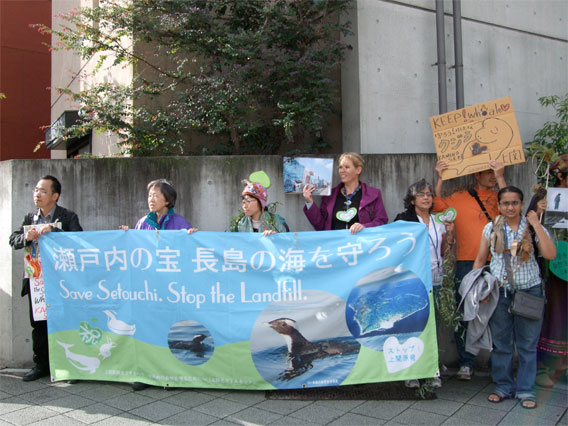Despite pledging broad support for conservation in developing countries at the recent COP10 biodiversity summit, this year’s host Japan may be neglecting conservation issues closer to home.
The Japanese Biodiversity Hotspot of the Seto Inland Sea coast in Kaminoseki Town, Nagashima island, Yamaguchi Prefecture, also referred to as the “Last Eden in the Seto Inland Sea” is home to many important endemic species. Despite being one of the oldest National Parks in Japan (established in 1934), this Eden is now the center of controversial plans to construct a nuclear power plant directly within its borders.
Unusually for Japanese land use change projects, which normally meet little opposition, for the last 30 years a power plant proposal led by Chugoku Electric Power Company (CEPC) has been heavily criticized by a coalition consisting of locals from the nearby island of Iwaishima, environmentalists, and national scientific bodies. To date, their protests have blocked the development. However, planning approval for the initial land reclamation stage, granted in 2008, reopened uncertainty about the site.
 Oct 26th, Atomic Energy Day, Japanese and international NGOs distributed leaflets to conference participants near the COP10 site. |
To prevent the planning approval from being acted upon, volunteers have been continually occupying the site in sea kayaks and boats. Despite this, 1 day before COP10, CEPC began land reclamation work at the nuclear site.
The environmentalists have strong support: 860,000 have signed a submitted petition to the Ministry of Economy, Trade, and Industry (METI), and three scientific societies (Ecological Society, Japanese Association of Benthology, and the Ornithological Society of Japan) have called for reassessment of the environmental assessment to CEPC.
Biodiversity at the proposed nuclear power plant site
The area of the Seto Inland Sea around the proposed power station is one of the few remaining locations where levels of biodiversity can be found at their 1960 levels.
Nagashima is the only area globally where the crested murrelet (Synthliboramphus wumizusume), a bird species assessed as Vulnerable on the IUCN Redlist, inhabits year round. Species which are endangered or extinct in other areas, such as the Finless Porpoise and Black wood pigeon also have healthy populations in the Nagashima area.
Potential effect of the nuclear power plant
In addition to the local impacts of the land reclamation, the proposed power plant will have wider impacts over the surrounding ecosystem of the Seto Inland Sea, discharging 190 tonnes a second of 7-degree-C warmer water into the surrounding seas.
Although the Seto inland sea is not land locked, it takes approximately 2 years for 90% of the water to be replaced by water from the Pacific. Concerns have been raised that this characteristic of the inland sea will magnify the effect of the warm water effluent, leading to a detectable rise in sea temperatures, as has been recorded in the past from a previous Ikata nuclear power plant in Shikoku.
Activities at COP10
At COP10, led by the Hiroshima-Kaminoseki Link (Founder Professor Masae Yuasa, Hiroshima City University) citizen opposition group, 269 Japanese and 46 overseas groups announced their collective agreement against the nuclear power plant at Kaminoseki.
22nd of October, during the COP10 opening period, Kaminoseki nuclear power plant plan was mentioned in NGO-CSO statement by Teppei Dohke of Japan Civil Network for CBD and Ramya Rajagopalan of The International Collective in Support of Fishworkers (ICSF).
On October 26th, Atomic Energy Day, Japanese and approval international NGOs called and distributed leaflets to conference participants near the COP10 site. (photo caption)
According to professor Yuasa, petitions have never stopped nuclear power plant plans in Japan. However, she said, “Even though we were not able to see actual change by Japanese government, we think that the opportunities at COP10 will be a good chance to call international attention to this problem”.
While scientific opinion by Japanese experts and public opinion was largely ignored by the Japanese government and the company, critics of the plan hope international support will compel the government will pay more attention to this issue.
Hiroshima-Kaminoseki Link is continuing to seek advocates and says it will approach the government to prevent planning permission for the full nuclear plant being granted to CEPC.
Related articles